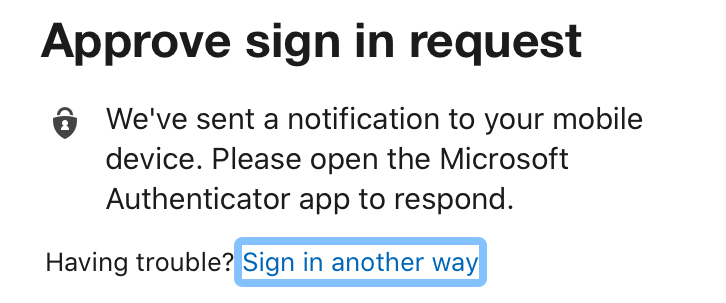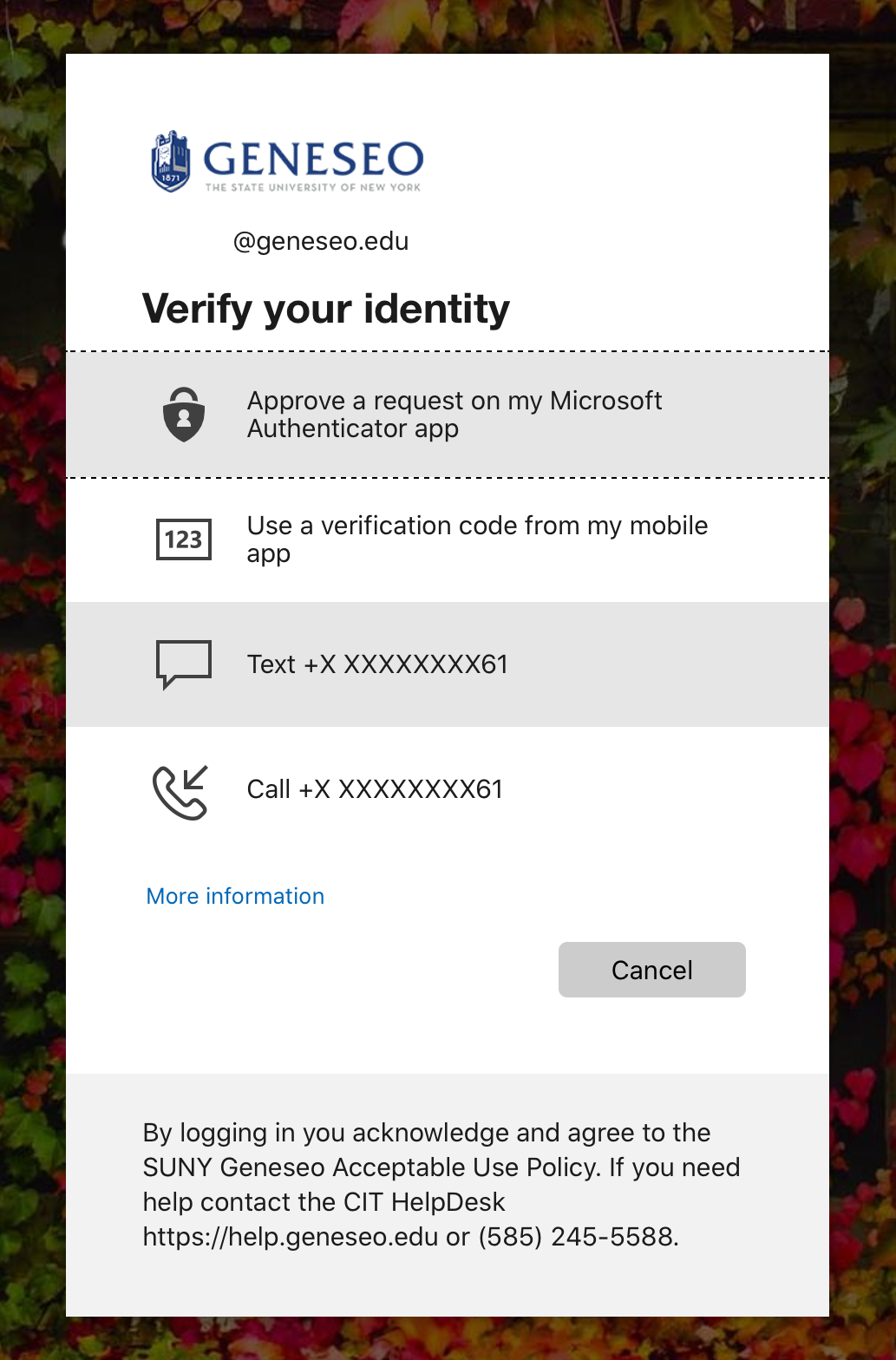Versions Compared
Key
- This line was added.
- This line was removed.
- Formatting was changed.
Please visit Microsoft's My Security Info page to manage your MFA authentication methods and default method.
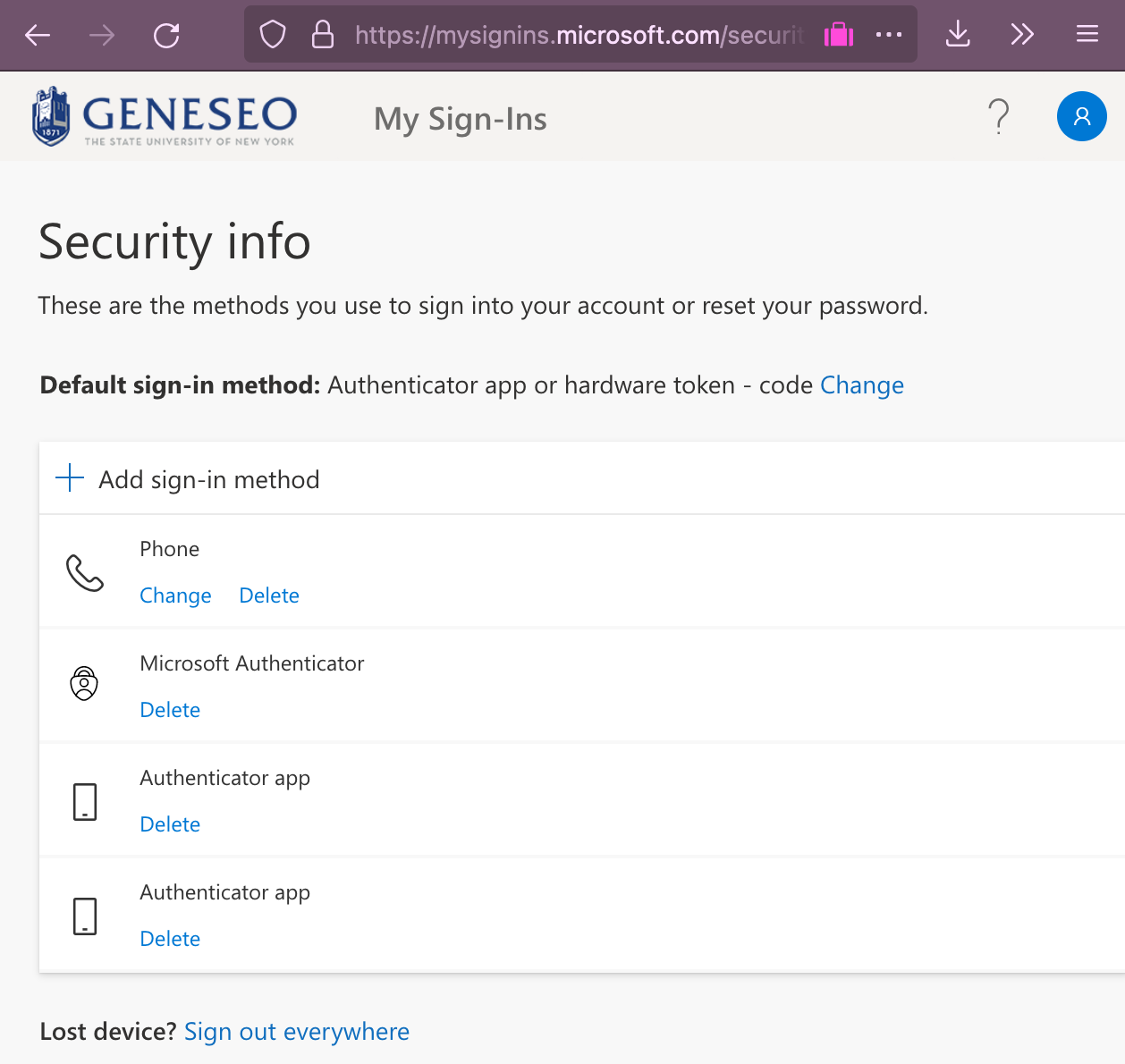 Image Added
Image Added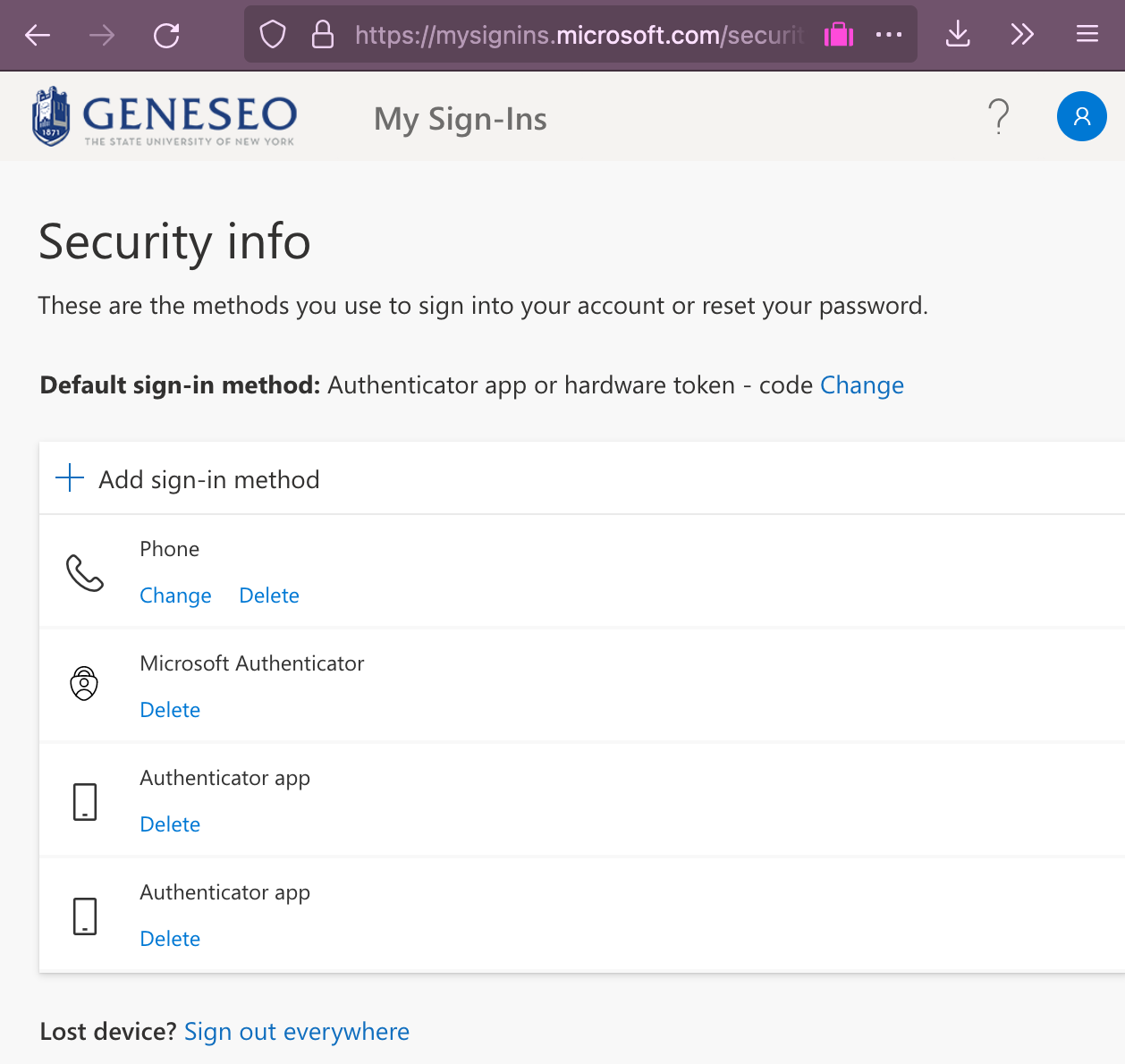 Image Removed
Image RemovedAdding MFA methods
| Warning | |
|---|---|
| title | Just One Is Never Enough!
Please configure multiple MFA methods so that losing one does not prevent you from accessing your Geneseo account! Common ways to lose access to MFA methods are:
|
To prevent you from being locked out of your account, we suggest adding multiple methods that can be accessed from different devices. View the "Authentication Methods" section of this page for a list of various options for authenticating with MFA.
Access
, or sign into my.geneseo.edu, click on your initials in the upper right corner
, and select "Manage Security Info"
To Add a method, click + Add method.
If you
do not have any methods, you will be
automatically prompted to create your first one.
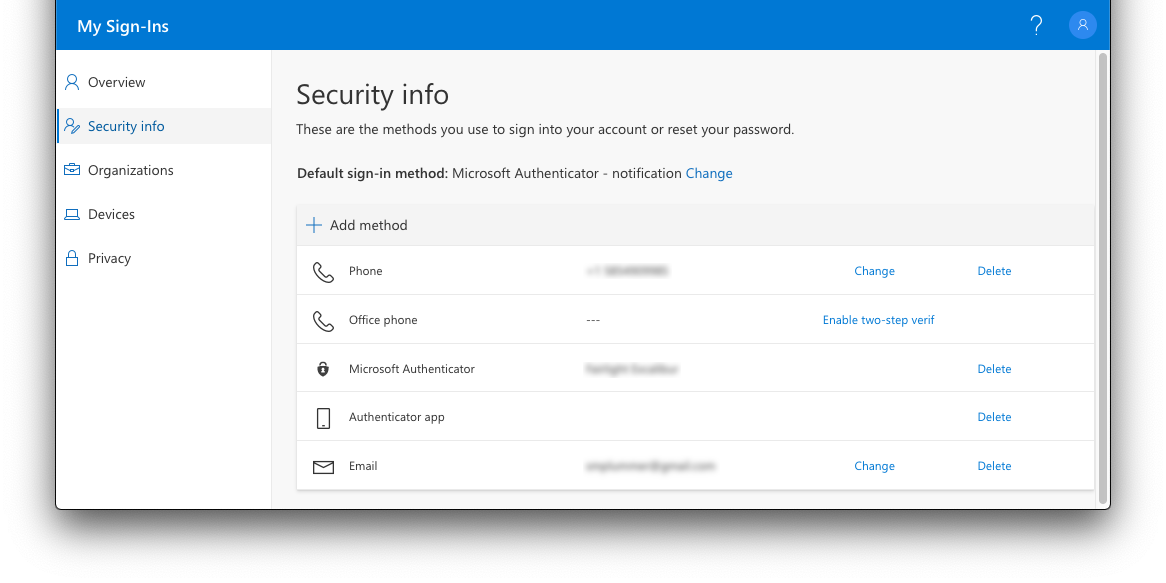 Image Modified
Image ModifiedSelect the type of method you want to add.
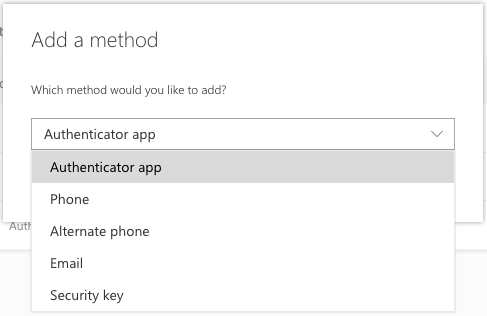 Image Modified
Image ModifiedFollow the prompts for the selected method. See the Available Methods section below for specific instructions.
Remove an MFA Method
Access your Microsoft security info
Find the method you want to remove in the list and click the delete option
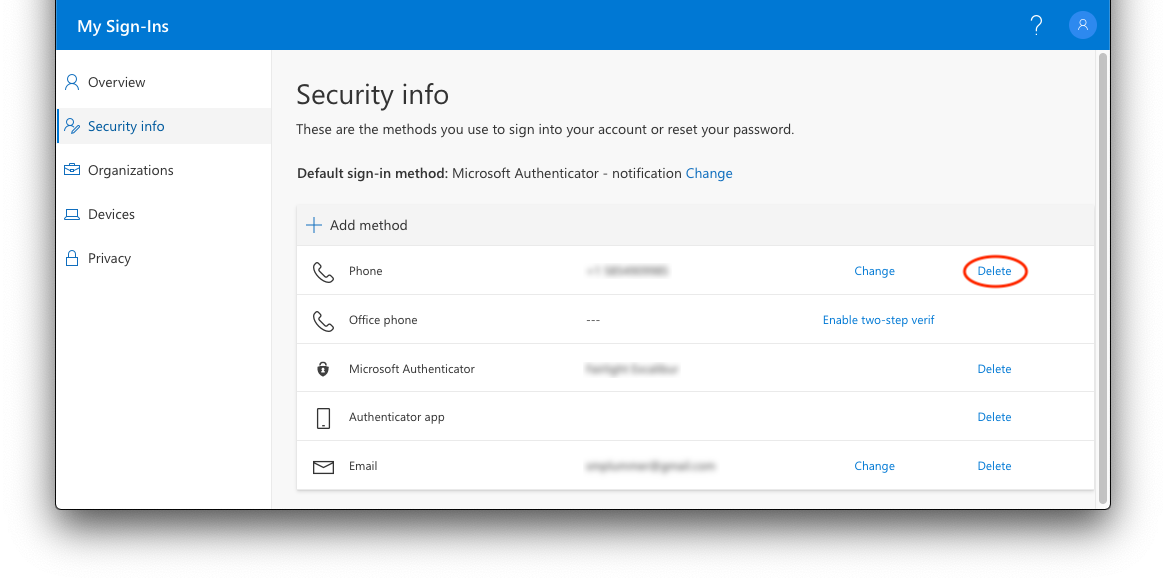 Image Modified
Image Modified
Change your default MFA method
Access your Microsoft security info
Click Change
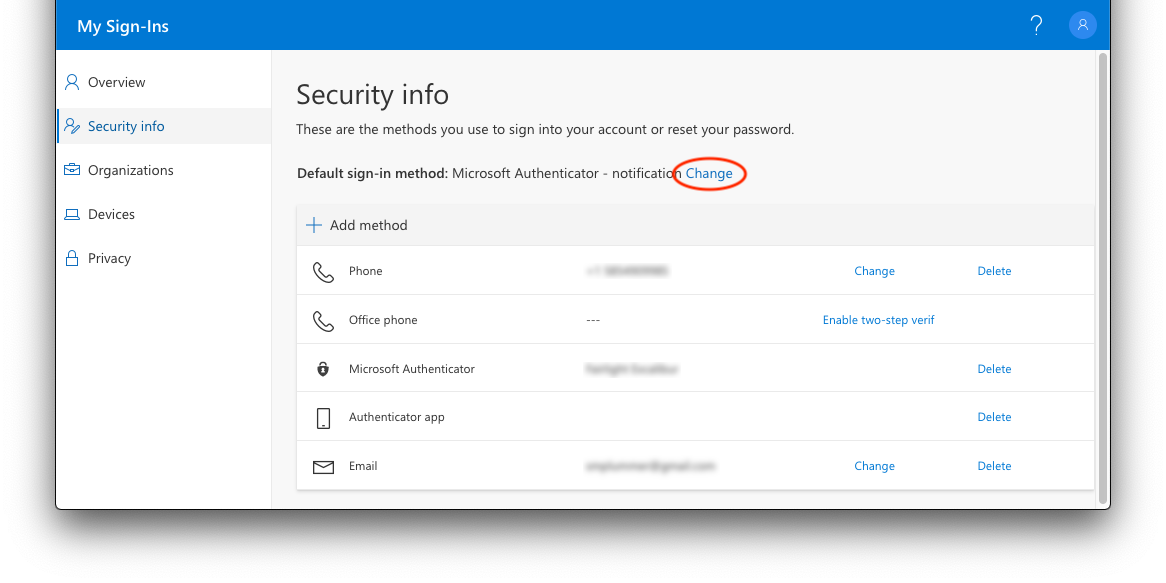 Image Modified
Image ModifiedSelect the method you would like to use from the drop down menu
Available Methods
Microsoft Authenticator App
The free Microsoft Authenticator app (available for iOS and Android devices) is our recommended authentication method, and sends a "push" notification to your device to verify your login attempt. It also provides a rotating code you can type in if your mobile device doesn't have internet connectivity and can't receive push notifications.  Image Removed
Image Removed  Image Removed
Image Removed
 Image Added
Image Added Image Added
Image AddedPlease see Microsoft's official Authenticator App method documentation for instructions on adding this method to your account.
| Info |
|---|
Unexpected Notifcations?If you receive a notification when you are not attempting to log in, deny the request and use the 'report as fraud' function within the app. |
| Warning |
|---|
Don't get locked out!Deleting Microsoft Authenticator or transferring it to a new phone will break the trust between Microsoft and your device, and you'll need to use one of your other configured MFA methods to reestablish that trust. If have no other MFA methods configured and cannot sign in to your account, please call the CIT HelpDesk at 585-245-5588. They will verify your identity over the phone, and walk you through reestablishing a working MFA method. |
"Other" Authenticator Apps
Any app that supports scanning MFA QR codes (ie. implements the Time-based One Time Password, or TOTP, protocol) may be used with your Geneseo account. The following are popular choices:
Google Authenticator
Apple iCloud Keychain (only on Apple devices)
Authy
BitWarden ($10/year subscription to unlock support for this MFA method)
LastPass
Add one of these apps by going to your Security Info page, then:
Click the add sign-in method
Select authenticator app and click Add
Click I want to use a different authenticator app
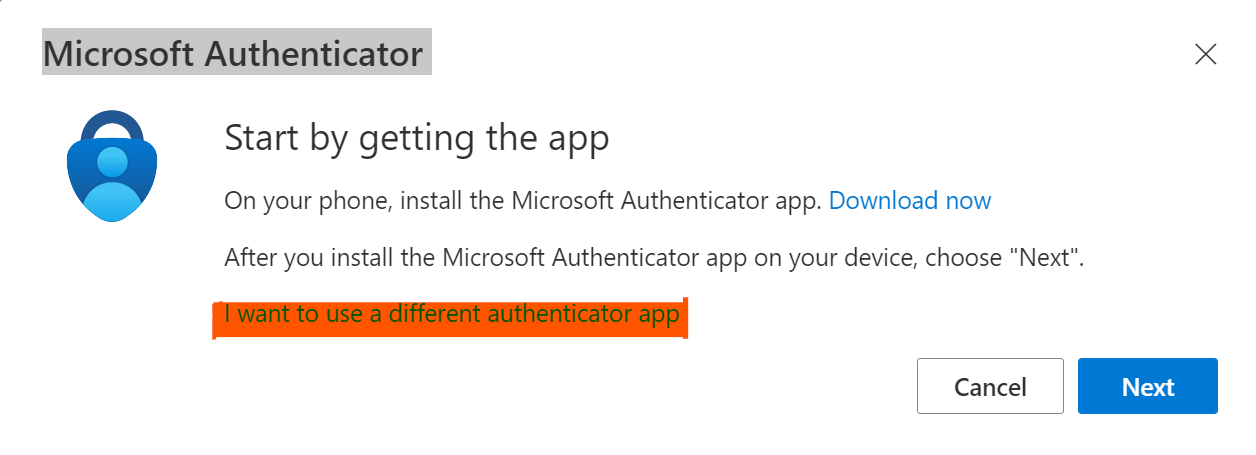 Image Modified
Image ModifiedClick next
Follow the instructions from your other authenticator app for reading the QR code. Once your app displays a 6-digit code for this new account, click next
Enter the 6-digit code displayed in your other authenticator app when prompted by Microsoft, and click next. This confirms to Microsoft that your other authenticator app correctly parsed the secret information in the QR code.
Phone Verification
For US phone numbers, located in the US only, Microsoft will call your phone number and prompt you to approve your pending sign-in.
Please see Microsoft's official Phone method documentation for instructions on adding this method to your account.
Text (SMS) Message
For US phone numbers, located in the US only, Microsoft will send a text (SMS) message with a code to be entered in the login window.
Please see Microsoft's official SMS method documentation for instructions on adding this method to your account.
Security Key
Any FIDO2-compatible physical security key can be registered and used with Geneseo accounts. See Microsoft 365 Passwordless Authentication for more details.
Security Fob
If you do not have access to a mobile phone or desk phone, your department can purchase a security fob. The security fobs are small (about the size of a car key fob). Press the button on the fob to generate a number that can be typed in to the authentication screen to confirm your login. *Please note - hardware tokens must be purchased from CIT for $16. Third party hardware tokens are not supported.
Troubleshooting and Questions
| Expand | ||
|---|---|---|
| ||
We are required to use MFA by new SUNY security guidelines. Our systems are under constant attack. The most common are password spray attacks where attackers send thousands of logins using usernames and passwords harvested from the web to phishing attacks where attackers attempt to get your username and password. Multi-factor Authentication stops all these attacks. If you would like a detailed analysis of how MFA protects logins Your Pa$$word Doesn't Matter lays out Microsoft's research across millions of logins explaining why passwords are insecure and how MFA results in protecting against all but the most targeted attacks. |
| Expand | ||
|---|---|---|
| ||
Logins to most Geneseo web based services and Microsoft's OneDrive and Office will require you to sign in and use MFA at least every 14 days. Sign in frequency varies between services based on security and vendor requirements. |
| Expand | ||
|---|---|---|
| ||
When prompted to sign in, click on the Sign in another way button and select a new method. 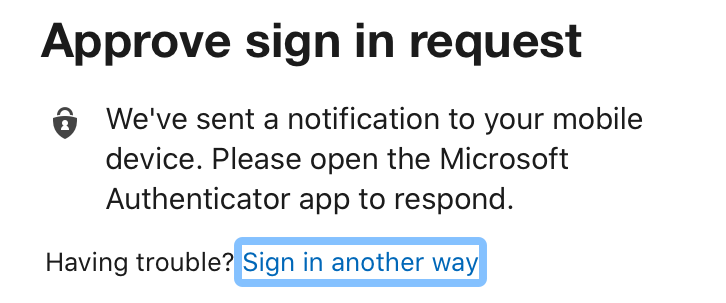 Image Added Image Added Image Added Image Added |
| Expand | ||
|---|---|---|
| ||
You should notify the CIT HelpDesk as soon as possible if you lose your phone or authenticator. |
| Expand | ||
|---|---|---|
| ||
Yes. Using a device for multi-factor login comes with the obligation to take reasonable precaution to protect it. Such precautions normally include the use of a password or a PIN to unlock the phone, as well as maintaining current versions of your device's operating system and Authenticator App. |
| Expand | ||
|---|---|---|
| ||
Yes. Third-party apps such as 1Password, Authy, or Google Authenticator can be used as a software token to generate an OATH verification code. Users may have a combination of up to five OATH hardware tokens or authenticator applications such as the Microsoft Authenticator app configured for use at any time. |
| Expand | ||
|---|---|---|
| ||
You should report all messages that you did not generate. This may be a sign of someone attempting unauthorized access to your account, and your password may be compromised. Deny the notification and then confirm that it’s a fraudulent attempt. You should change your Geneseo password after reporting the fraudulent login attempt. Note: the authenticator app will warn you that reporting a fraudulent attempt may cause your account to be blocked or disabled, but this will only occur if you do not change your password in a timely manner. |
| Expand | ||
|---|---|---|
| ||
The Microsoft Authenticator needs access to your camera to take a picture of the QR code (the weird barcode looking square) on your screen. It does not use camera access for anything else. |
| Expand | ||
|---|---|---|
| ||
The Microsoft authenticator does not track you and it does not log location data. The only push notifications it will ever send you are approval requests for logins to Geneseo systems. The Microsoft Authenticator does not give CIT or Microsoft access to any data or information on your device. |
| Expand | ||
|---|---|---|
| ||
You may not think you have access to any information worth protecting, but all our faculty staff have access to some secure information of one kind or another, from your W-2 (which an attacker could use to commit fraud and receive your tax return) to student health data, FERPA protected student data, or college financial data. If your Geneseo account is compromised, it also could be used to trick other Geneseo staff into responding to a phishing email. Your account can also allow an attacker to more easily access systems or compromise users that do have access to the data they are looking for. |
Related articles
| Filter by label (Content by label) | ||||||||
|---|---|---|---|---|---|---|---|---|
|
|
|
| Include Page |
|---|
|
|
| Page Properties | ||
|---|---|---|
| ||
|
| Table of Contents | ||||||||||||||||||
|---|---|---|---|---|---|---|---|---|---|---|---|---|---|---|---|---|---|---|
|

